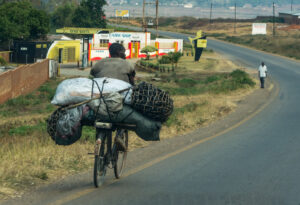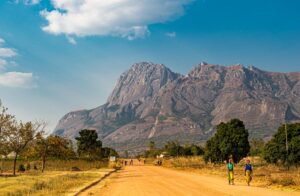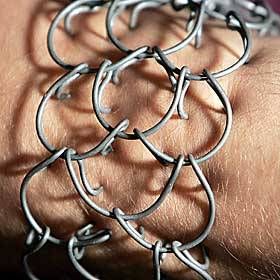
When this blog was commenced 133 weeks ago, it was a different world. I didn’t expect that I would create a rod for my back by labelling each blog with a numerical connection to the name of the blog without being repetitive. When I started the blog, it was just by way of a scrapbook of ideas, and I was lucky to have a number of guest writers. They provided some leavening given that writing on a weekly basis is a serious business. One person caught in the middle of a pandemic with an irregular shuttered existence has a challenge to report usefully when the country’s leadership has been so uneven and where the principle of uncertainty has played into disturbance of the collective mind where the enemy is never “a tangible there” but “an intangible everywhere”.
I remember reading Erving Goffman on “Asylum” and “Stigma” when I was a young man. These books elaborated the concept of total institutions and the relationship between the inmates and those in supervisory positions of the inmates.
Goffman’s “total institutions” concept can be traced back to the establishment of the Hôpital Général in Paris in 1656 by Louis XIV. Once an arsenal, a rest home for war veterans, and several hospitals, the Hôpital Général served as a house of confinement for the poor, the homeless, the unemployed, prisoners and the insane – those who sought assistance and those who were sent there by royal or judicial decree. In the space of several months, one out of every hundred inhabitants of Paris would find themselves confined in these institutions indiscriminately.
Australia is in various stages of lockdown; a euphemistic way of describing imprisonment–lite.
Goffman set out his rules for the game. How relevant are they to our current society after such a period of intermittent lockdowns?
Goffman’s inmate is subject to three rule sets. The first are “house rules”, which should be “relatively” explicit both prescriptively and proscriptively.
In exchange, secondly there are clearly defined rewards and privileges for obedience. Bound up with this system is the nature of release. The third element is the nature of punishment, when the rules are broken.
 Does Goffman give any clue as to how the inmate should respond? No, he does not. His analysis of various responses to lockdown is well catalogued whether monastery or mental hospital. The concept of a prolonged imprisonment was not seen as the consequence when the Virus first appeared early last year. Then a selection of politicians from both sides of politics participated in light-hearted advertisements to encourage hand washing. It was as though it was similar to the mood at the outbreak of WW1 when the early prediction was of the conflict being over by Christmas 1914.
Does Goffman give any clue as to how the inmate should respond? No, he does not. His analysis of various responses to lockdown is well catalogued whether monastery or mental hospital. The concept of a prolonged imprisonment was not seen as the consequence when the Virus first appeared early last year. Then a selection of politicians from both sides of politics participated in light-hearted advertisements to encourage hand washing. It was as though it was similar to the mood at the outbreak of WW1 when the early prediction was of the conflict being over by Christmas 1914.
With imprisonment, the length of sentence is known; in the asylum, this is less certain, when translated to a whole community locked down.
In the early phase of the pandemic, the conspiracy theorists and the anarchists, the libertarian-authoritarians and anti-vaxxers were yet to form their confederacy. Rather it was the doomsayers. After initial hesitation, a strong advocacy time for improved hygiene, social distancing leading on to community isolation and, belatedly, masks and hope improved the compliance of the community.
Unfortunately, Trump and the mad assortment of the above consolidated the COVID nonsense. It should not be forgotten that this activity was unconsciously aided and abetted by elements of the research community scrabbling for funding and prepared to participate in studies, on, for instance, hydroxychloroquine and ivermectin.
The race for a useful vaccine commenced. Over the previous 20 years, there had been much preliminary research on vaccines into these viruses, which was translated into an accelerated pathway for developing an effective vaccine. The nature of the coronavirus, with its chameleon quality, presented a problem, but the value of the previous work became clear with the mRNA vaccines demonstrating efficacy and able to have an accelerated introduction this year.
Last year showed the impressive use of the lockdown – but turning much of Australia into a prison until the Virus was apparently conquered. Unfortunately, the Virus changed into a more virulent form.
The Federal Government refused to develop dedicated quarantine facilities and if it were not from some robust medical advice, a nascent mixture of the above toxic creatures some of which already existed within the Parliament exhibited the same Trumpian irresponsibility which plunged the World into the pandemic crisis.
The successful suppression of the Virus lulled Australia into a period of self-satisfaction, not recognising that armistice is necessarily unconditional surrender.
The problem has been that, despite enhanced vaccination, the second wave lockdown in NSW has not been as effective once the Delta variant got into the community. The delay in Berejiklian’s response let the Virus loose. It reached Victoria before any lockdown measures were in place. Even the swift lockdown there was insufficient, and the lack of compliance in Victoria has been poor in traditional working class areas, when the Federal government failed to restore sufficient income support to offset not being able to go to work.
“House rules” had not been explicitly stated to the effect that, if the virus appeared again, you, the community would be imprisoned again even when you had been granted both the privileges of vaccination and some income support. The first round had generated sufficient anger, assuaged by Job Keeper and Job Seeker; a second lockdown term in both NSW and Victoria (and the ACT) was not brief, there was little income support and the severity of the lockdown varied according to the particular whim of the government.
However, this lockdown has been resisted by a group of “ex-prisoners” who have set up an urban guerrilla operation designed not only to burn down “the prison” but also to institute a Trotskyist state of permanent revolution. The State has no way of collecting these guerrillas who have become carriers of the virus, the frontline shock troops for the Virus, except by reacting to the rioters. The more strident they become the more the resentment builds up in the rest of the community, made worse because of no improvement. At the same time, the Murdoch media has inflamed the situation by encouraging this resentment without advocating a solution.
Is there one?
In the post WWII community, democracies have paradoxically increased the number incarcerated. Now, what about the vaccine refuseniks and those infected. Prisons are acceptable for the first, but what of the second? Bespoke quarantine arrangements – infectious diseases sanitoria – all linked to a healthy outcome, may be acceptable. But for God’s sake, do not use the words “lock hospitals” or “concentration camps”.
However, all such facilities must have a degree of humanity; but all imply selective isolation. Our society will have to develop a system of temporary standardised isolation facilities, where those infected are well treated but there is suitable surveillance. Otherwise, as has been shown, this, and future viruses, will spread like wildfire, vaccination or not such facilities need to be integrated into the health system.
Opening up the community becomes a meaningless term while a significant group in the community remains defiant, refusing vaccination, and in fact enhancing the pandemic, replete with the images once invoked by Erving Goffman.
A small endeavour
This is the story about how the pandemic has disrupted a small program in Malawi – but first, the background.
Mustapha drove us in the Toyota Land Cruiser from Majete, in the south of Malawi, to Pumulani on Lake Malawi. It took seven hours, during which time we left the wildlife reserve for a front row seat of rural Malawi and then, contrasting that view, with that of the commercial hub of Blantyre with its profusion of modern buildings, cars and men in suits and ties. Blantyre is the toilet break stopover. Even the posh hotel does not have sufficient toilet paper and the spare toilet paper had been left in the truck. To paraphrase the saying about chooks: “don’t count your rolls until they are attached”.
Mustapha is a Sunni Moslem. He prays five times a day, observes Ramadan and his food is halal. He is a ranger at the wildlife reserve and lives three hours away in a village where he goes home for four days a month. Home is a two-room brick house with separate cooking and washing facilities. In the language of the Chichewa people, he is bambo; his wife mai and they have two ana – one is four years; the other, a ten month old baby. Both are boys.
Most of the rangers are Christian; his village is mixed, like his workplace. This is reflected in the countryside through which we pass, where church and mosque co-exist in the one village. The Muslim influence spread from the north under Arab influence and there are concentrations of Muslims along the Lake. However, Malawians are predominantly Christian.
The camp we have left lies on the Shire River, which we cross twice more on our trip across Malawi. The riverbank is lined by elephant grass but behind this natural stockade are cultivated rows of corn and squares of green vegetable garden – maize, beans, tomato plants, sweet potatoes and onions are common crops – the abundance of these vegetables is evident in the markets of the various townships we pass through.

Outside Blantyre, rural Malawi is people walking – women and children, water containers or packages on their heads; children in brightly coloured uniforms straggling home from school. Rural Malawi is also oxcarts being driven and bicycles, mostly ridden by men. Bicycles are loaded down with charcoal or straw-coloured thatching grass or wooden staves. Bags of charcoals standing like sentinels abut the road, ready for sale. Stooks of thatching grass also line the roadside for sale.
Police roadblocks are everywhere, but only once are we asked where we are going.
As we go further north and towards the central Malawi plain the country becomes drier. Baobab trees appear in profusion. Flashes of yellow, red and pink signify the profusion of bougainvillea. It vaguely resembles the Australian Kimberley with the rocky outcrops, the red earth and vegetation dominated by acacia interspersed by villages with signature mango trees. Here lies the difference between this part of Malawi and the Kimberley.
The Kimberley is sparsely populated, unlike Malawi where the villages tumble against one another so that walking between villages is feasible. So much of the traffic is pedestrian, despite two large buses destined for Lilongwe passing us at a breakneck speed. There are minibuses and mitolos clustered in the larger townships overloading themselves with people and goods. We pass a bicycle, one of many, a youth hunched over the handlebars. The message on his violet T-shirt is memorable: “Jesus is my hero.”

Surprisingly at no stage have we seen evidence of the major cash crop of Malawi, tobacco. Hereby hangs another dilemma that Malawi faces. Malawi is recognised as the source of superior tobacco. Yet increasingly in the Western world tobacco is a pariah crop. World opinion is closing in on tobacco usage because of its undeniable link with cancer and a host of other diseases. It is a matter which cannot be swept as cigarette ash under the carpet of government inertia worldwide.
We reach our destination after seven hours. Lake Malawi extends for 500 kilometres and we’re at the southern end. It looks like a giant sea and it is little wonder that the early Australian explorers, aware of what was happening in Africa, searched for an inland sea. In parts the Lake is 400 m deep and 52 km wide. The Shire River is the only river that flows out of Lake Malawi, joining the Zambezi River in Mozambique. The Lake extends north to the Tanzanian border; and a small part lies within the Mozambican border. This is the Southern end of the Great Rift Valley, where the tectonic plates are inching apart. The Great Rift Valley runs from Mozambique, through the Lake, to Tanzania, where it splits into two.
The Eastern flank runs through Kenya and the West through Burundi, Rwanda and Uganda, before joining again in Ethiopia, running into and along the Red Sea, turning northward to end in the far reaches of Syria. I cannot help thinking that the Great Rift Valley is a metaphor for Africa – a tectonic plate moving its 48 component countries apart. Perhaps the metaphor is too cute and exaggerated, but it is surprising nobody seems to have traversed these jagged faults to find, in documentary terms, the “Real Africa” to see how long the rift really is. Michael Palin has crisscrossed the world; Stephen Fry has landed glancing blows in encompassing the 50 states of America; and David Attenborough has “terrorised” the fauna in his “pan-world”exploration of why and who and what we are.
Life is tranquil – so different from the above intrepid world travellers. The only excitement is the female baboon bounding towards me across the patio and seizing my morning tea biscuits. One into the mouth; and knowing that she has the advantage of surprise, seizing a second. The plate clatters onto the tiles and breaks into pieces. She has gone, chased by the staff.
I sit as a speck on the edge of this enormous freshwater pond. We are eating fish – the chambo – a white-fleshed, elegant tasting fish – drawn from the lake. We sailed around in a dhow and watched the fish eagles circling and the silent men in their canoes, each searching for fish. We sailed past a pod of hippopotami lounging just off the shoreline. A ribbon of villages lines the beach. They could be on a desert island. Except that when the dhow heads back to shore there is this rocky escarpment so reminiscent of north-west Australia.
But there is another facet of the camp where we are staying. They are acting as protection for a dozen albino children living in the nearby villages – the eldest being 18. Albinos are constantly at risk of being kidnapped, slaughtered, and dismembered for their body parts. The superstition in several East African countries that possession of albino remains will provide luck is a grotesque reflection on our human condition; and in the last two years before we went 18 children had been reported killed in Malawi. The real number? Who knows! Family members have been known to be complicit in such barbarity.
We rightly worry about rhinoceros being killed for a lump of inert keratin; we should also express our abhorrence of this human trade for what – a person with a congenital lack of melanin pigment.
There are practical requirements for albinos living in this part of Africa, beside expressing outrage – sunscreen, UV protective clothing, sun hats, sunglasses – and there is a need for eye testing facilities.
The camp where we stayed had set up a project to support albino children in three local villages; this involved their staff and also donations from guests from time to time. Easy to just hand over some notes and move on, however we decided to become involved in the longer term by providing bulk supplies of sunscreen and sun protective gear that was not easy to obtain in Malawi and other East African countries. However, that plan struck a snag early on – the cost of getting a large amount of sunscreen from Australia to Malawi was prohibitive – $40 to post just one litre and more than three months on the road! A different solution was needed and no assistance was forthcoming from courier companies.
For a number of years one of us had been going to Africa each year so instead of sending supplies, I took packages with me – with more than 50 kgs of sunscreen and 50 pairs of sunglasses. This was still cheaper for me to take it and pay for a return flight from Johannesburg to Malawi (including a night in Lilongwe) than to freight the stuff from Australia! I would give it to a contact in Malawi who delivered it to the camp from where it was then distributed. Customs in Malawi were bemused by the exercise, seemingly concerned I was planning to set up shop there and long discussions were usually involved with the customs officers about the exercise.
However, COVID put paid to those plans. By the time I can get another large supply to Malawi it will likely be three to four years since the last delivery without outside assistance, just one of the many impacts of COVID on African people. The health devastation wrought by COVID upon African countries and the lack of vaccines for all but a small percentage of the population makes me so sad, given for someone like myself who loves southern Africa and its people. For the many local people who have relied on tourism for their livelihoods, the sudden and extended cessation of travel to African countries has left many struggling to survive.
Affluent western countries may now be opening up for travel but the acute shortage of COVID vaccines across Africa means day to day living as well as tourism will not return to anything like normal for years.
Armenians in Ireland
I was intrigued when seeing the Armenian Cross, the so-call khachkar, which are still being constructed in that country. I thought how much these khachkars resembled the Celtic cross, particularly the high crosses. Apparently there were Armenian monks in Ireland in around the 8th century, refugees from Islam. The two High Crosses, one at Durrow in Co Offaly and the other at Muiredach in Co Lough are suggestive of the traditional Armenian khachkars.

The one at Durrow is close to the village of Rahan, where there was a monastery dating from the 5th century. The first monastery was established in the 5th century BCE and then extended 100 years later by St Carthage. The site consists of two churches and the ruin of a mediaeval tower house, and therefore existed four centuries before the Armenians are said to have come.
The Armenians may have been housed in the monastery. The Armenian churches have pointed domes to mimic the cone of Mt Ararat, and high vaulting with the height of the church matching the length of the church. There is enough remaining of the Rahan church to strongly hint at the association. The stonework and pitched roof line resemble that of contemporary 9th century surviving Armenian architecture. The other association which may have relevance is that it is known Charlemagne used Armenians as his architects.
However, so much is lost in speculation as the dots joining them have been pulverised in the passage of unrecorded time.
Gտեսություն, ցտեսություն, Գլեդիս
What is going on in Australian politics in terms of corruption is as old as the First Fleet. Gary Sturgess, while Director-General of the Premier’s Office, was once the genius behind Nick Greiner who, as Premier, introduced the Bill creating the Independent Commission against Corruption (ICAC) when Premier in 1988 (sic):
 In recent years, in New South Wales we have seen: a Minister of the Crown gaoled for bribery; an inquiry into a second, and indeed a third, former Minister for alleged corruption; the former Chief Stipendiary Magistrate gaoled for perverting the course of justice; a former Commissioner of Police in the courts on a criminal charge; the former Deputy Commissioner of Police charged with bribery; a series of investigations and court cases involving judicial figures including a High Court Judge; and a disturbing number of dismissals, retirements and convictions of senior police officers for offences involving corrupt conduct… No government can maintain its claim to legitimacy while there remains the cloud of suspicion and doubt that has hung over government in New South Wales.
In recent years, in New South Wales we have seen: a Minister of the Crown gaoled for bribery; an inquiry into a second, and indeed a third, former Minister for alleged corruption; the former Chief Stipendiary Magistrate gaoled for perverting the course of justice; a former Commissioner of Police in the courts on a criminal charge; the former Deputy Commissioner of Police charged with bribery; a series of investigations and court cases involving judicial figures including a High Court Judge; and a disturbing number of dismissals, retirements and convictions of senior police officers for offences involving corrupt conduct… No government can maintain its claim to legitimacy while there remains the cloud of suspicion and doubt that has hung over government in New South Wales.
The charge sheet Greiner listed was long. Later, Greiner was himself a casualty, when supporting one of his Ministers. These actions were referred to the newly-formed ICAC and he resigned when the four independent parliamentarians would not support him. He was replaced by John Fahey.
What sticks in the craw is the outrage that this Government body, which has done its homework obviously painstakingly and interviewed the former Premier, should be pilloried. The former Premier knows that the game is up, because if ICAC had got it wrong, well somebody as well-versed as her would have invoked the “force field” with anecdotes of the poor little migrant, who has triumphed against the odds.
The concealment of the Deal, which the politicians want to shovel under the carpet, using privacy as the cleaning agent, was not helped by the ambivalent response from Mark Dreyfus. He, the Shadow Federal Attorney-General on one hand indicated that an incoming Labor government would introduce a meaningful ICAC. Yet on the other hand he had the qualification suggesting that there should be more secrecy to enshroud the preliminary investigation, aka “wriggle room”, which suggests that there are a number of sidelong glances towards certain colleagues, given the Labor Party itself is not “squeaky clean”.
Yet recently I received in the mail one of those unsolicited letters sent to his “million closest friends” from Albanese. The letter announced in bold that “An Albanese Labor Government will establish a powerful transparent and independent National Anti-Corruption Commission.” There was no detail, but it seemed more robust than the utterance of Dreyfus. One favourable Dreyfus action was that unlike some of his other Labor colleagues, he did not fall for the trap of effusively praising a disgraced departing Premier.
I suspect Berejiklian has no other life apart from politics; she was coddled by the media, unlike Julia Gillard. It should be remembered that Niki Savva conducted a relentless war against Gillard in the media, with that deadly efficiency women have when they want to bring down another woman. Berejiklian had none of that criticism; she “ascended” to the top unlike the messy way Gillard did.
The requirement for a National ICAC will be advanced if the next election produces a raft of intelligent independents not bound to the mindless obedience that the factional system of both parties imposes. The need for robust debate should be freed from those politicians, often influential, who have been compromised, as has been clearly shown by this Federal Government’s record of thinly-veiled corruption.
Has somebody lost the lock on the Pandora’s Box?

It seems that there is a virus of resignation sweeping the NSW Parliament. The one thing I admired in John Barilaro’s resignation was his refusal to criticise ICAC, because the reasons for his resignation are still unclear.
His comment was most unlike that of his Federal National leader, Barnaby Joyce who has likened ICAC to the Spanish Inquisition. I am surprised that Barnaby believes ICAC is thus run by Dominicans obsessed with Jewish and Muslim apostasy. The Spanish connection on the other hand seems to have formed an important part of Mr Perrottet’s life through his membership of Opus Dei, which was the brainchild of Josemaria Escrivá, a Spanish priest with close links to Franco’s rule. Therefore, if one believes Joyce, Dominic Perrottet with his Spanish connection should be a strong supporter of ICAC.
And you think I’m being ironic!
As well, for those interested in what happens to seats vacated by NSW Premiers requiring a by-election, the Liberals should remember when they picked up Premier Wran’s seat of Bass Hill in 1986. Narrow victory it may have been, but there was a 22 per cent swing. Yet the Labor Party does not seem to have the appetite for such a course in relation to Gladys’ seat; but nevertheless the Liberal Party should call a by-election as soon as possible to stymie any independent candidature.
Now NSW is faced with a trifecta of by-elections, and the more politicians protest about an organisation dedicated to rooting out corruption, the more they lose whatever shred of trust remains within the community,
Yet Jesuit-trained Barnaby can’t shut up. His antics remind me of that old joke (and here I am indebted to The Guardian) about a Franciscan, a Dominican and a Jesuit who are arrested during the Russian revolution for spreading the Christian gospel and thrown into a dark prison cell. In a bid to restore the light, each man reflects on the traditions of his own order.

The Franciscan decides to wear sackcloth and ashes and pray for light. Nothing happens. The Dominican prepares and delivers an hour-long lecture on the virtue of light. Nothing happens. Then the Jesuit gets up and mends the fuse. The light comes on.
Really, you don’t say, Barnaby was taught by the Jesuits. Perhaps he only heard the words, “light” and “fuse” – and made the wrong connection.
“Volere Volare o Vogare Qualsiasi”

Letter from New York City
October 2021
Dear Readers,
It’s the most wonderful time of the year—that is, if you enjoy the spookier things in life. There are more than a few scary tales on our October roster, including Edith Wharton’s own selection of her best ghost stories, a new paperback of the Edward Gorey-illustrated edition of the H.G. Wells classic The War of the Worlds, and another selection of supernatural stories from our friends at Notting Hill Editions. Below you’ll find some fun, spine-tingling readings, as well as a peek inside the latest title in the New York Review Comics series and a little bit of the story behind the cover of Mr. Beethoven, Paul Griffiths’s inventive novel about the eponymous composer.
If you are a local or visiting New York City this weekend, consider coming by the NYRB booths at the Brooklyn Book Festival. We will be at booth 12 for Children’s Day on Saturday, October 2, and at booth 405 and 406 for the Main Day on Sunday, October 3. We will be selling books and, on the Main Day, giving copies of The New York Review of Books away. We would love to see you there.
— An email received from the New York Review of Books.
Sorry. Hope to see you next year; but thanks for the invitation. Saturday and Sunday were a bit cloudy, otherwise the weather in this past week has been a bit variable – rain and all, but New York is New York, Virus or Not!
The question I bet nobody will ask Dom Perrottet

Do you wear or have ever worn a cilice?
Do you know of anybody who wears a cilice?
If the reply is no, you, the investigative journalist should then approach his brother who is Dean of Warrane College and ask what is its policy in relation to the wearing of the cilice.
I would be mortified if any of you, the fourth estate, dared to ask, but may do so; but Morrison is not a valid reply.
Mouse Whisper
It is acceptable for the political leader to stand before his or her constituency to make a sweeping gesture and say “I have a vision for the country…”
Often it would be more truthful if the same political leader would rather have said, “I have a hallucination for the country…”
But how acceptable would that be?

